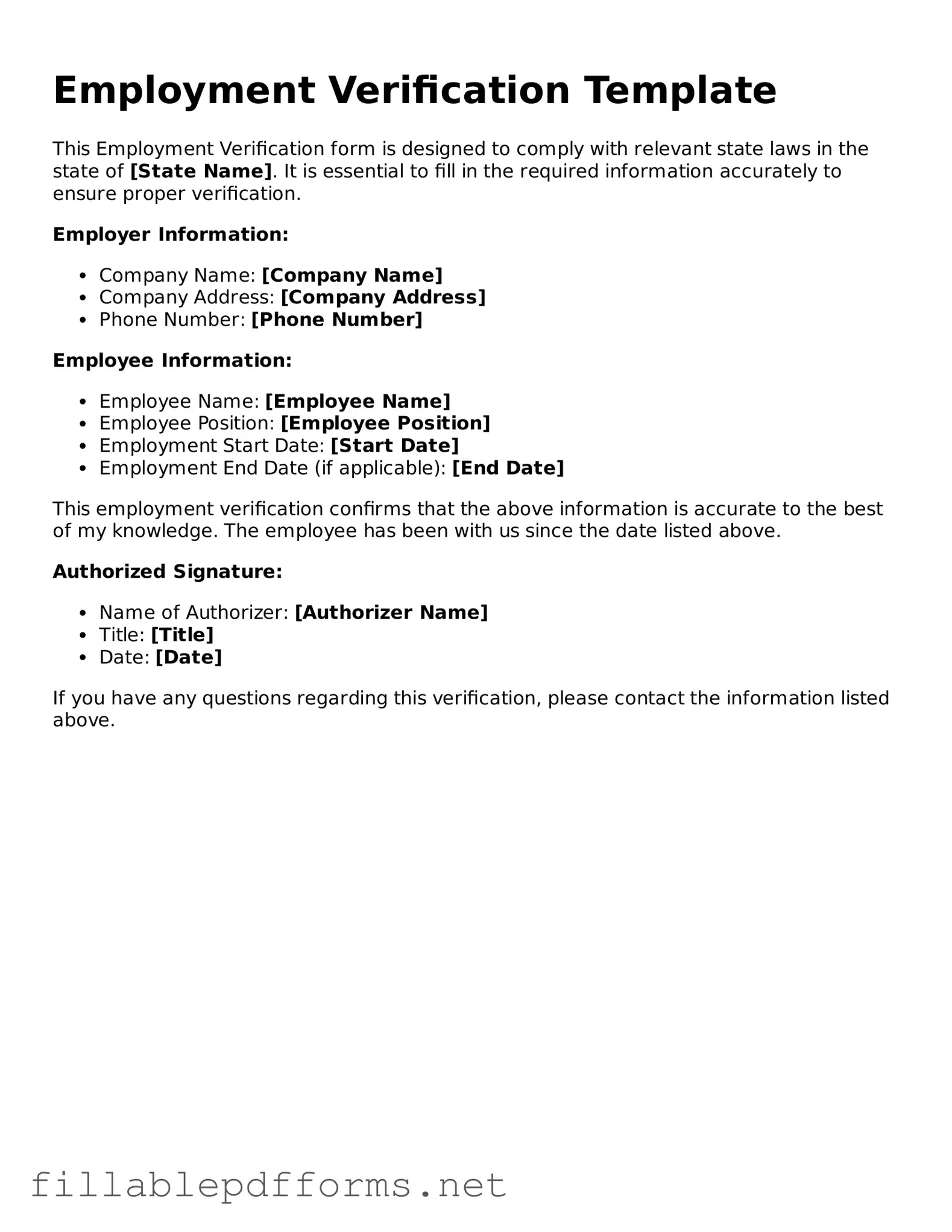Blank Employment Verification Template
The Employment Verification form is a document used by employers to confirm an individual's employment history and job-related information. This form plays a crucial role in various processes, such as background checks and loan applications, ensuring that the information provided by applicants is accurate. Understanding how to properly complete and submit this form can make a significant difference in your employment journey.
Launch Editor Here
